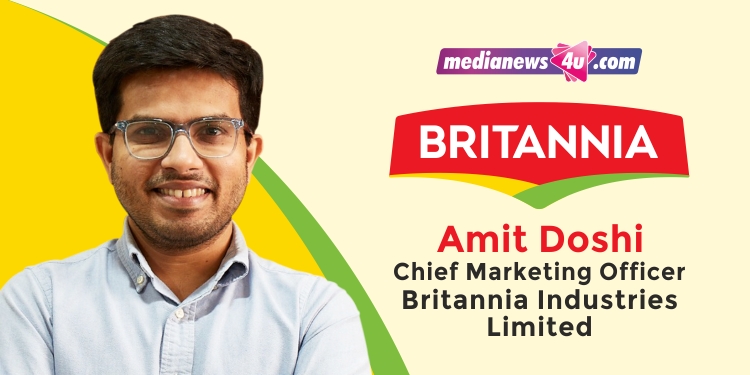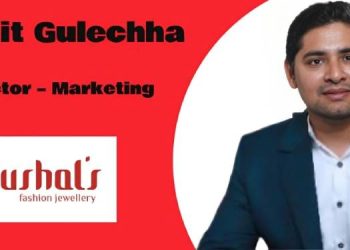What explains the sudden infusion of freshness into some of the brands? From Good Day to 50-50 to Pure Magic and others, we have seen some sharp, fresh work of late.
It’s about being fresh, it’s about being distinctive. For some of this output to come through, it does take a bit of time because you want the thinking on the brand to be right. One needs to be cognisant of where the roots of the brand are and then change the course in that mindfulness. When it comes to new brands or new categories, there’s always that much more space. There is no one-size-fits-all formula. But, even on brands that had a very clear, strong, effective tone of voice for many years, my belief is that it’s always possible to infuse freshness – in a way that’s not just in touch with the times, but also true. Embrace a tone of voice that’s different, and surprising. And that element of unexpectedness is what I guess people are noticing in the work that Britannia is putting out.
So this has been a conscious effort…
Just over 18 months back when I rejoined Britannia, we drew up a vision for ourselves – internally at first – to become, over a period of time, a creative force to be reckoned with. We needed to do a few things for that. A lot of these things are embedded in culture.
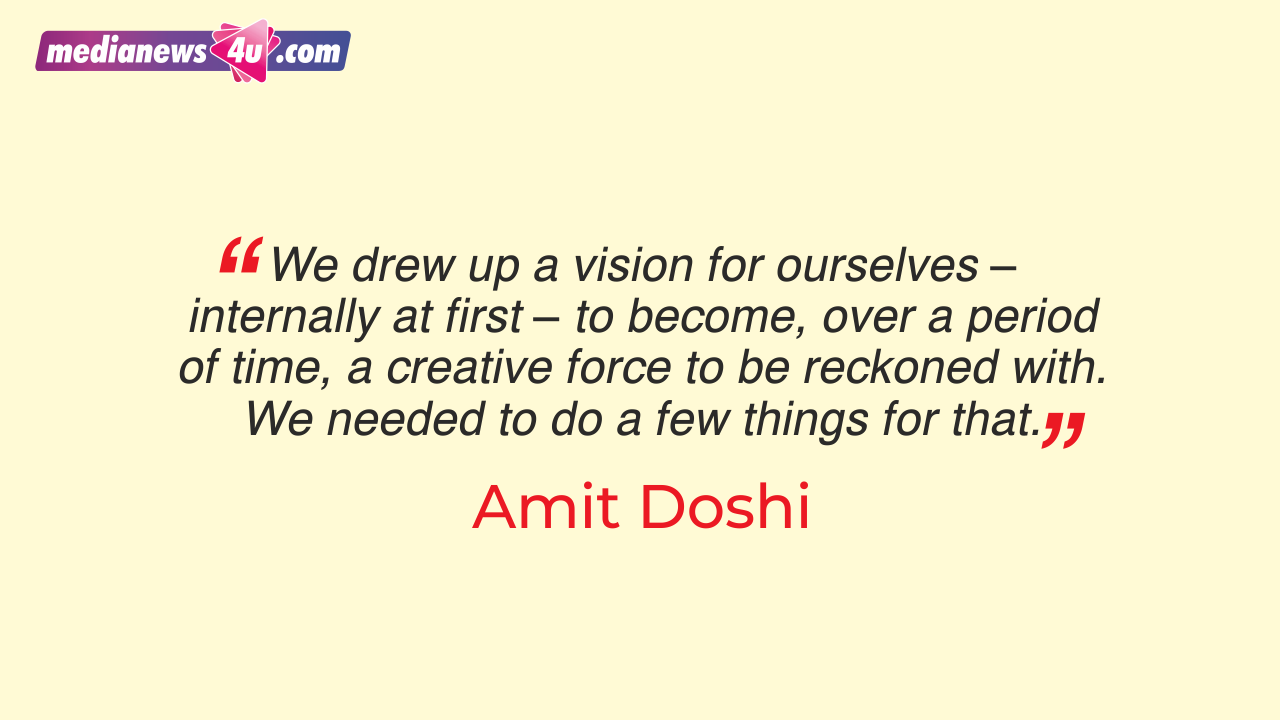
We said we are not going to get Into a 30-second TVC trap. We said we will go idea-first. And an idea could come from anyone In the ecosystem. It could come from the mainline agency partner. It could come from the media agency, it could come from a sales colleague in the room, anyone.
The second thing we said was that there needs to be a culture of real collaboration. An idea could be coming from one agency partner, but then it’s really about pinning it down as a group. Which is, what’s the big idea in the room? And then all of us come together to build on that idea irrespective of where that idea was born.
The third thing we said is that technology is giving a lot of opportunity to create consumer experiences that were not possible earlier. So how are we going to embrace digital transformation in the way we go about doing our work?
And then we managed to assemble a very, very diverse team of partners – which today we are very blessed to have.
We have partners who’ve been on the brand for decades and who really laid the foundation for the brand. And we also have partners who come from a very different generation and come with the ability to experiment with boldness. And are also pushing us to push the envelope.
How does this work in practice?
It’s never one agency partner to a brand. Each of our brands has at least two creative partners. And we have, I would say, two more strong creative partners in our media agency and our PR agency. And it’s really this crack team of four that brings everything alive. Depending on the campaign at play, each of these partners could play different roles. It’s much like cricket. Everyone’s clear about the role they’re playing, and those roles could change depending on the campaign. That’s the culture.
Look, it’s easy to set the culture, it’s difficult to walk the talk. But we’ve been lucky to have partners who’ve been forthcoming in helping us navigate this change.
You work with Lowe Lintas, Mccann, Schbang, Talented and The Womb on the creative side, with Mindshare for media and Genesis BCW for PR. It’s come together beautifully, judging by the work that we see. But while trying to create this culture, were there a specific set of challenges?
Of course. And the way I would see it is, if you are setting out on a transformation journey, you’re able to anticipate that something like this is going to happen. Then it doesn’t appear like a challenge, but like a change management need.
It was very clear that each of our partners had their strength that has made all of them so successful over the years. But each of us trains, as is true in the case of humans as well. I think it’s just about making sure that there is respect in the room; that there is trust in the room.
We’ve been very lucky to have partners who have not just been open to change, but have also been very open to giving credit to each other. In a creative process, that is valuable. So, how does one handle a situation when an idea comes from one creative partner, which sparks off a discussion and then at the end of it, we find that the execution is something that will be best delivered by another? And we’ve had those situations.
So yes, there are those sensitive conversations. I don’t think it’s always easy going. But if one is able to stay consistent and authentic at those junctures, and is able to stay authentic over a fair period of time, that’s when trust really builds.
I think it’s important to be true to the idea. And then to be very, very open in sharing credit. It’s important to stay consistent with the culture for a long period of time. That’s the code with which we operate.
I would give a lot of the credit to both – the Britannia marketing team who has been able to drive that change from the inside, and creative agency partners who’ve been willing to walk the change with us.
Is it this freshness and distinctiveness that you have sought to bring in more of an imperative in the category? Has it become more critical today?
You’re right. It’s become very difficult to get to the consumer. If they were attention poor earlier, now there is no attention. When there is no attention, how do you stand out?
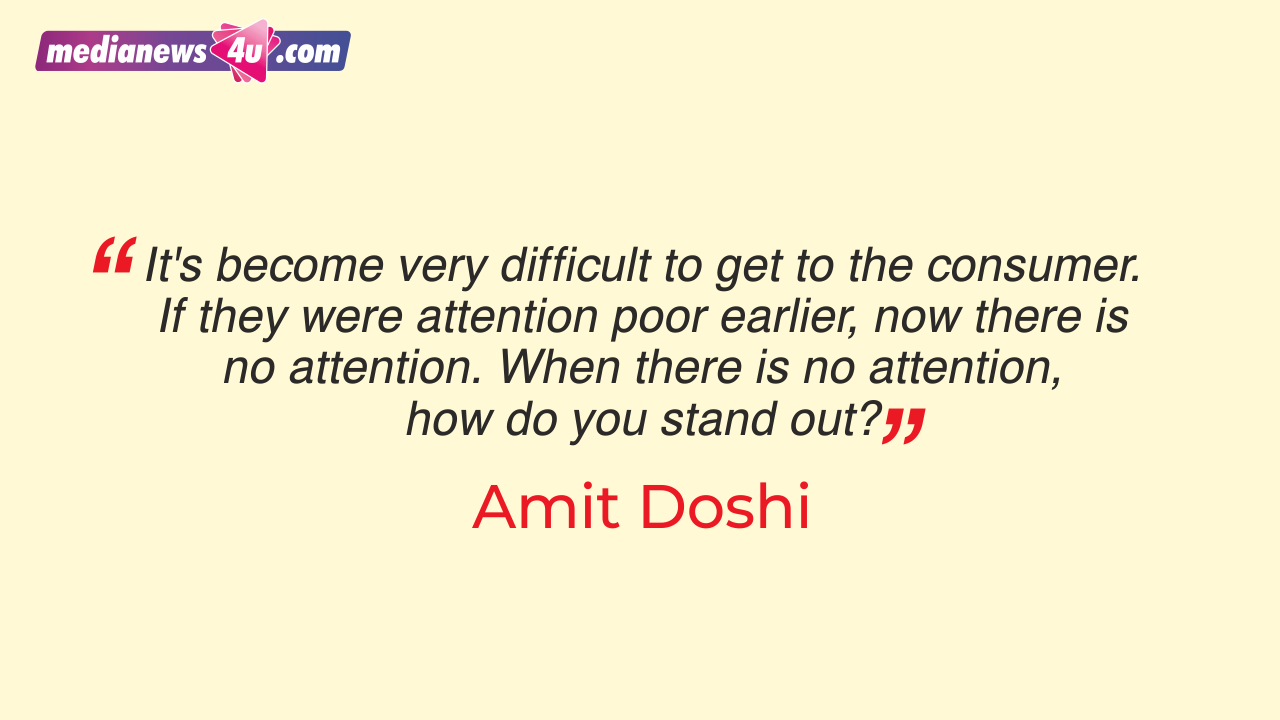
The second is to also understand that the language of communication has changed. Attention starvation doesn’t come from the fact that there is so much content. It comes from the fact that we’re seeking entertainment of such short duration. In the pandemic, all of us were very happy to binge watch 50 episodes of shows. Now there’s so much fatigue. A lot of the population today is deriving their entertainment out of hours of watching Reels, which are a few seconds short.
Look how rapidly changes happen in a space of three or four years. How you adapt to that change is also vital. Can I infuse the learning that I am getting from the Internet consumption into my advertising?
For a few brands, including Good Day, we have experimented to make films which are 15 seconds short. The challenge there was to tell an impactful story even in 15 seconds. And to challenge the notion. We’ve just gone live with our new campaign on Marigold for two states.
And it’s McCann and Lowe, which have produced classic TV commercials for ages, who are making spots that are 15 seconds long. That’s the master film – 15 seconds. If you look at ‘Britannia 1947 More’ done by Talented, it was a minute and a half-plus. So, on the other hand, here you have a new age agency which is producing long format.
So it’s really about the context and the idea.
Some of the pieces of work seem to have worked very well. Let’s start with Good Day’s ‘Chote Pal’. It has been running for a couple of years now? The second leg is now live…
Actually, just over a year. The Good Day work came out of a jamming session with the McCann team where we wanted something fresh on the brand. But we also wanted to stay true to what the brand is, and has always stood for. They said when everyone is looking at a big moment of happiness or success, what if you are able to celebrate every day? What if it’s a ‘choti pal’, a small moment of happiness, that is celebrated?
And so if the pal is choti, then why should my film be long? Both sets of films have been directed by Milind (Dhaimade, Love and Faith) and I would give him as much credit as I would give to the creative team. Because we had a vision of these shorties, but to be able to pack in these stories, absolutely goes down totally to the craft of the director. In fact, for the second set, we waited for a few months because we were not getting his dates. We were very clear that It’s only going to be Milind.
We had also hyper-regionalised each of these communications. In the second one, we went a step forward and we went very, very local. Each market had a film that only they would understand – and no one else does, which we were perfectly fine with.
So somewhere, has this ‘Chote pal – why wait for the big moments’ also helped increase the frequency of consumption?
Yes it has, and that’s an underlying thing for us. We want to produce work that has an impact on the brand and on the business. Only then is it making a difference. It’s not creativity for creativity’s sake. We’ve seen our household penetration accelerate because we’re giving more triggers for consumption through the year. It has had an impact on the top line growth of the brand over the last year and a half.
We saw a completely unexpected set of films with Ravi Shastri for 50-50. Where did that come from?
A lot of credit for the 50-50 work, of course, goes to the Lowe team and the team who produced the work. We actually took a leaf out of 50-50’s history to start with. If you go back a few decades, 50-50 in its initial years was rooted around the uncertainty of a tricky decision on the field of cricket. We went back to our own pages of history, to the roots that made us famous.
And then, it was about bringing it out for today’s times. When we saw that persona, Ravi was the one who quickly came to our minds. We were aware of the fact that there are other brands who have worked with him. But we were quite confident of the story that we were telling. And it was a story for the mainstream masses. I’m very, very happy how it turned out. It began with Maska Chaska. We are now continuing it with Golmaal. And very soon, we will be using technology interestingly around the same content.
Tell us about the new work on brands like Jim Jam, and specifically the ‘Ashram’ work on Pure Magic.
If you look at Bourbon and Jim Jam, they’ve been absolutely rock solid, super popular brands over the years. It was really again about contemporising them, refreshing them, giving them a new language.
Pure Magic was about building distinctiveness. It is a fairly cluttered market. It’s very easy to sometimes get distracted or carried away by the craft, but if you unpeel the layers you will realise, there’s a powerful insight. We have a product which is so decadent and indulgent, that when you are having Pure Magic you forget everything else.
That was then connected with this very powerful life truth that we all face today – either thinking about the past or thinking about the future. It’s just that moment when you are having Pure Magic that everything else sort of leaves you. And all that you’re doing is living in the moment. The team at The Womb – they have such a powerful, compelling stance from a strategic standpoint. That’s where it all begins. And then, it finally comes down to the creatives.
At the start of the conversation, you mentioned ideas first and then the media follows. There are questions on the effectiveness of certain digital channels. What is your view on the digital space and marketing therein?
I can give you a short answer but I think it deserves a conversation by itself. The whole digital conversation unfortunately veers towards traditional versus new. We need to stop doing that. We need to move from this versus that to being very clear about what is the role that different media and different platforms play. If there’s an idea that deserves digital to lead it, so be it. If there’s an idea that requires hoardings to lead it – like what we saw with Talented in the recent campaign on Milk Bikis. The hoardings were contextual to those specific localities across Tamil Nadu.
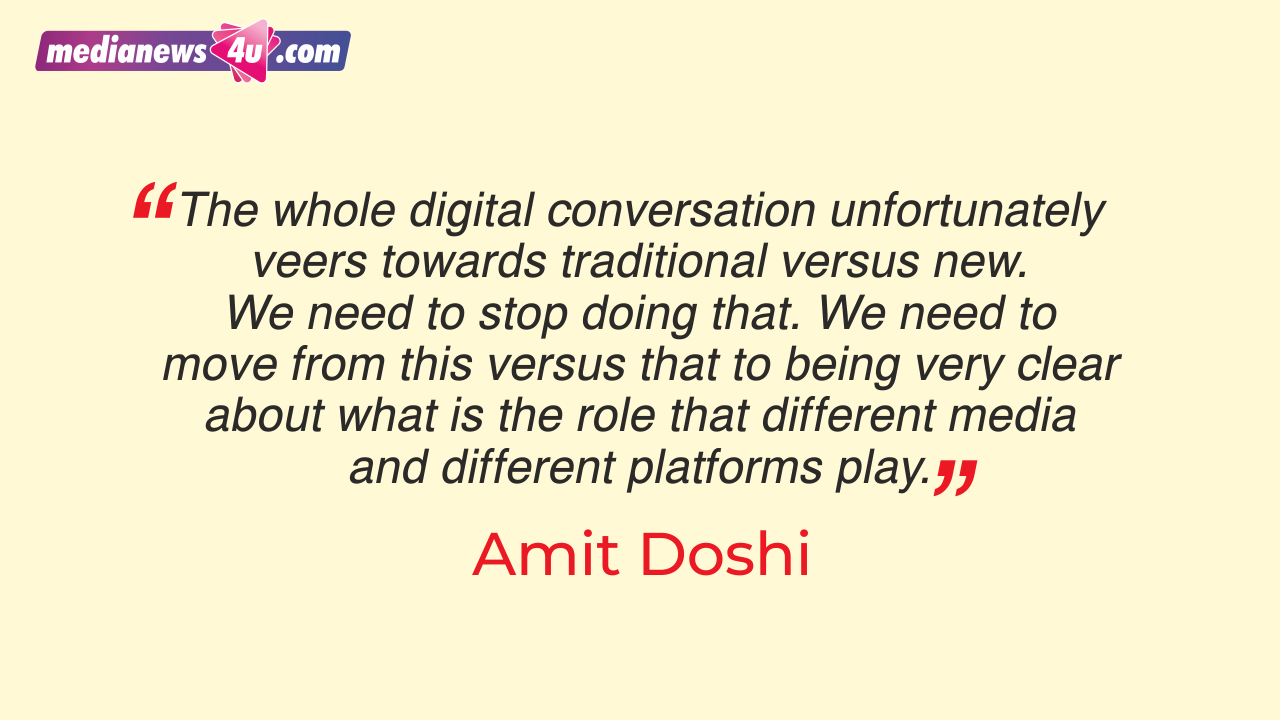
If one starts applying that ideas-first framework, then I don’t think this friction of digital vs TV vs print comes to play. And in many cases campaigns are not digital extensions. We’ve been able to build experiences which have been very unique.
With Britannia 1947 More we were able to visualise how the last living freedom fighters of India would have looked in their youth using AI. There are a lot of critics and there is talk of how AI can’t replace human creativity. Again, I don’t think it’s a this versus that battle. The reality about this is that if I’m able to create a multiplier as a marketer, why would I not do it? Why would I not embrace it?
Your view on influencer marketing – how has it come together for your brands. Because the house is divided on effectiveness in the influencer space. Marketers are either here or there, but all of them are spending money on influencers.
As I usually respond to most digital-related questions, I am always firmly on the fence and quite comfortable there. Because again, It completely depends on the context. We often talk about young people and say, my daughter or this teenager is not following celebrities but they’re so following influencers. But aren’t we doing the same? I have the people who I follow, the digital creators. The ones I follow might be different from the ones you follow.
They don’t all have to be on Instagram, but we all have our own Influences. And therefore one has to embrace and accept the fact that the digital creator ecosystem is having a marked influence on people. Just because I’m not able to use it well or if I’m not able to measure it in as lucid a manner as I’m able to measure some other forms of content or media, that doesn’t make it ineffective. It’s just that we’ve not found the way yet to figure that out.
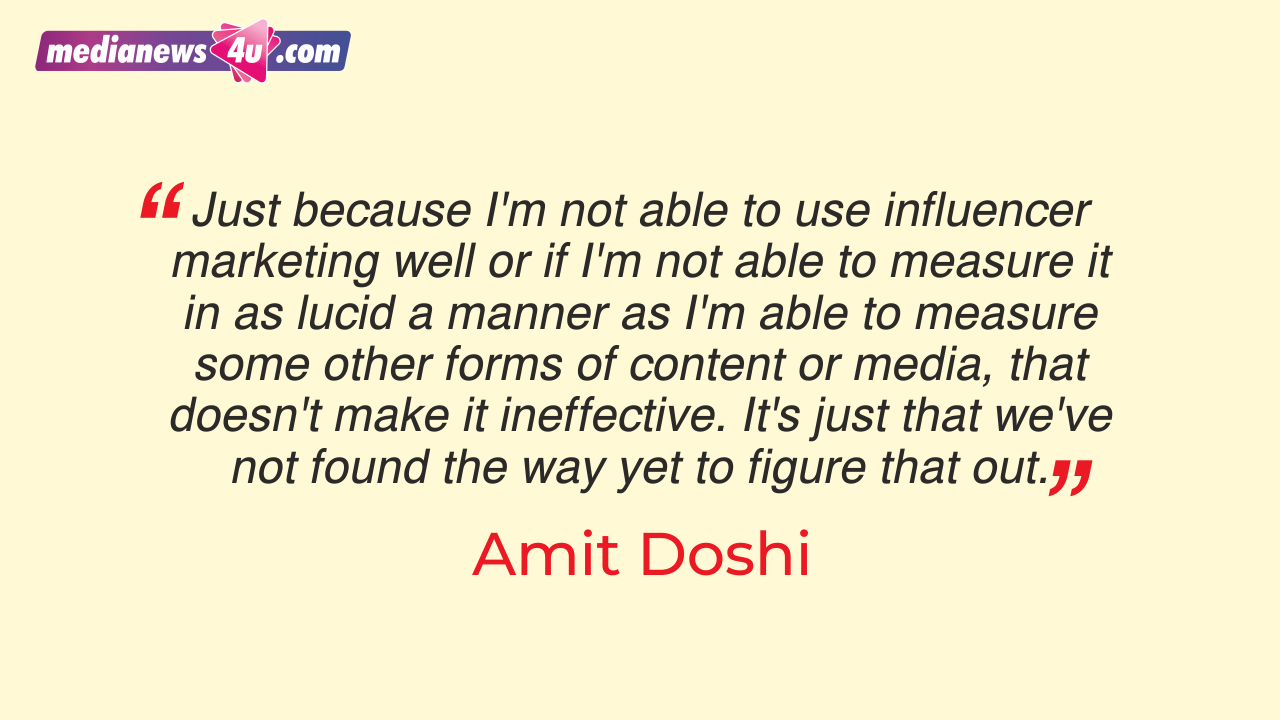
You have worked with Perfetti Van Melle India and spent about eight years at Britannia in your earlier stint with the company. Have communication codes in the category changed?
Food inherently is a fun category. A lot of my learning comes from the early Perfetti days. It’s important to be enjoying good food, nourishing, tasty, energising.
I would like to believe that we are creating new communication codes in the category. Yet there are some things that haven’t changed –like a Marie Gold and chai are inseparable. With products that are impulse-led and indulgence-led, I feel there is a huge space to push the communication codes.
You are on a market visit in Guwahati as we speak. How often do you hit the ground and is there a substitute for firsthand market visits?
I try to do at least two market visits a month. And no, there is absolutely no substitute to meeting consumers in person. There is no substitute to meeting retailers and the sales teams and getting feedback firsthand. One can have all the data in the world and all the technology, and we do have all of that. But there is no substitute to hitting the markets.
(First published by The Free Press Journal BrandSutra. Content powered by MediaNews4u.com. Feedback: [email protected])
Feedback: [email protected]

